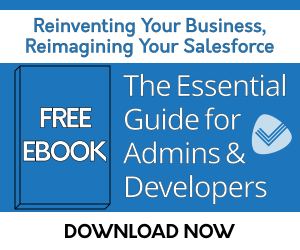Breaking Down the Vendor Selection Process
2025/10/07

How Apps Can Help With Vendor Evaluation
Choosing the best vendor can be overwhelming. And when you have limited time to make a decision, as well as numerous options and specific requirements to consider, this just adds more complexity to the process.
“You want to ensure that you are getting the best value, quality, and reliability from your vendors, and that they are aligned with your goals and expectations,” advises LinkedIn in their article, How can you evaluate vendors more effectively?
Relationships with vendors are important. And it’s critical that you understand how they will protect your data — even if they’re working on a smaller, shorter-term project. So during the decision-making process, you’ll need to understand a potential vendor’s policies regarding data protection, privacy, and cybersecurity.
In the Forbes article, 4 Tips For Organizations To Evaluate Third-Party Vendors, Jim Chilton explains, “A recent spike in data breach attacks has left some of the world’s largest and most impactful organizations crippled, and millions of pieces of private information in the hands of bad actors. In fact, the average cost of a data breach is $4.35 million, a number that has risen nearly 13% since 2020.”
Ensure Vendors Align with Business Objectives
Colin Reid, VP of Product Management at Gartner, recommends setting requirements for the buying team that’s evaluating vendors to make sure they are aligning with business objectives. “To ensure your evaluations are comprehensive and unbiased — and based on requirements and criteria that really matter,” advises Reid in the article How to Evaluate Technology Vendors Properly.
Vendor Evaluation Checklist
Categories to consider include:- Technical: What are their setup, delivery, and integration processes? What do they include?
- Health: How stable is the vendor’s business? Have you asked for references? How do they align to your culture?
- Pricing & terms: How do the one-time costs compare to recurring costs? What are the licensing terms? What are the renewal terms or costs?
- Services & support: What training and support pre- and post-purchase will you receive? Does it include implementation?
- Compliance: Are they industry-compliant?
- Privacy policy: Have you reviewed their privacy policy?
- Cybersecurity: How would giving this vendor access impact your organization? Do you have a policy for giving vendors limited access?
- Third-party reviews: Does the vendor have positive reviews? How do the reviews compare with other similar companies?
You can add requirements to the categories listed above based on your organization's needs. "Once your final list is complete, prioritize each individual requirement as “high,” “medium,” or “low.” Be sure to also assign weight to each requirement category according to its importance to your organization and objectives," Reid explains.
By taking an organized approach like this, it will help you narrow down your choices. You can prioritize potential vendors based on what’s important to your organization, and then score them against the requirements.
Apps Can Help Streamline the Vendor Evaluation & Selection Process
Our Rollup Helper app can be used to rollup info on potential vendors, and then our Lookup Helper app can be used to manage report information, while our Prioritization Helper app can be used to make decisions about them. And our Milestones PM+ app will help you bring all the various tasks that go into selecting a vendor together under one project.
Our Prioritization Helper app can help you relate records and make decisions about vendors. Using Pairwise Comparisons, collaborative decision making via the Analytic Hierarchy Process (AHP) can help reduce cognitive biases during the evaluation process. This is especially helpful for teams who are evaluating vendors.
Milestones PM+ can help you manage the vendor selection process, along with the projects that vendors work on with internal teams. You can use the Milestones PM+ template functionality to automatically create projects within Salesforce to increase efficiency, productivity, and consistency with your vendor evaluation and other business processes including:
- Tracking Billable vs Non-Billable Time
- Requirements Management
- Resource Management
- Status Tracking
- Budget Management
- IT Project Management
- Milestone Tracking
- Percent-Complete Tracking
Use Cases for Evaluating Vendors & Managing Vendor Information
Viewing the Largest Quote on an Account
Most Recent Contract End Date on Account
Tracking Open Cases on Accounts and Contacts
Using Templates for Automatic Project Creation in Salesforce
Customer Onboarding with Reusable Project Templates
Salesforce Task Notifications and Project Resource Alerts
Product Launch Project Management in Salesforce
New Location Opening: Manage Plans Easily with Salesforce Projects
| Before Diving into Your Salesforce Integration or Add-on Project | Passage Technology Blog | How Project Management Can Help Reduce Conflict & Improve Collaboration |
